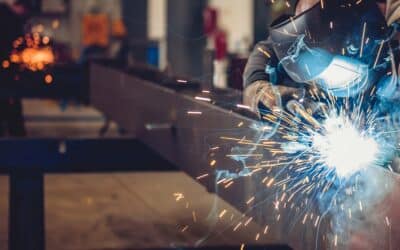Lightweight aerospace programs demand materials that cut mass without compromising safety or lifecycle costs. For Tier 1 and 2 manufacturers designing the next generation of airframes, the challenge is clear: reduce weight while keeping maintenance and downtime under control. Success depends on selecting the right lightweight materials that deliver strength, reliability, and long-term performance in service.
The Role of Durability in Lightweight Aircraft Materials
When engineers choose lightweight materials, they’re aiming for more than just reducing the weight of a part. The right choice helps aerospace and military applications burn less fuel, extend service intervals, and minimize unscheduled repairs. In other words, durable materials lower costs and keep fleets flying longer between maintenance checks.
Durability also supports sustainability goals. Every kilogram of weight removed reduces fuel burn, directly cutting emissions. For more on how weight reduction drives efficiency, read about the role of lightweight components in fuel efficiency and emissions reduction in aerospace manufacturing.
Key Durability Factors in Lightweight Aircraft Materials
Strength to Weight Ratios
The most critical factor in a lightweight airplane component is its strength compared to its weight. Aerospace components and systems must handle aerodynamic forces, pressurization cycles, and landing loads while remaining as light as possible. High strength-to-weight ratios allow aircraft to perform reliably without excess bulk, improving efficiency and safety.
Environmental Durability
Aircraft face extreme environments every day: rapid temperature changes, corrosion from humidity and salt air, oxidation at high altitudes, and constant UV exposure. Lightweight aircraft materials must resist these stressors to avoid cracking, corrosion, or fatigue failure.
Durability of Common Lightweight Materials
Aluminum Alloys
Aluminum alloys remain workhorses of aerospace applications thanks to their excellent strength-to-weight ratios, versatility, and ease of repair. Advancements in alloy formulations and coatings have boosted corrosion resistance and fatigue performance, keeping aluminum critical for skins, fuselages, and frames in modern lightweight airplane design.
Titanium
Titanium is one of the most proven durable materials in aerospace. Known for its strength, heat resistance, and corrosion resistance, titanium is used in high-stress applications like engine mounts, landing gear, and structural fittings. While more costly than aluminum, its long service life often offsets the higher initial cost.
Stainless Steel
Though heavier, stainless steel offers exceptional resistance to fatigue and cracking in extreme conditions. The reliability of stainless steel under thermal and corrosive stress makes it a trusted choice for critical aerospace components. It is often specified where safety margins are non-negotiable, such as hydraulic systems or high-heat applications.
Future of Lightweight Materials
The aerospace industry is pushing for lightweight materials that are stronger and more durable. Emerging technologies are enabling lightweight airplane designs that reduce weight without compromising performance.
Nanomaterials
Carbon nanotubes and graphene-enhanced composites offer high strength-to-weight ratios, excellent heat resistance, and improved fatigue performance. While still in the research and development phase, nanotechnology in aerospace could redefine how structural and secondary components are built.
3D Printing
Additive manufacturing allows optimized geometries that reduce weight without compromising durability. Properly qualified 3D-printed metals support part consolidation, minimize waste, and enhance strength. The opportunity for 3D printing to advance lies in expanding design possibilities, improving material performance, and increasing production efficiently in airplane manufacturing. Discover more about the future of 3D printing.
Partnering with NMG Aerospace for Durable Lightweight Solutions
NMG Aerospace helps clients select the right durable materials and lightweight materials for every application. With deep expertise in alloys, composites, and advanced manufacturing processes, NMG supports everything from material selection and qualification testing to prototyping, production, and full lifecycle management. Our engineers work closely with clients to optimize designs and ensure components meet the strictest aerospace performance and safety standards.
Develop lighter, long-lasting components with NMG Aerospace. Contact us today to help our team understand how to best support your needs.




0 Comments